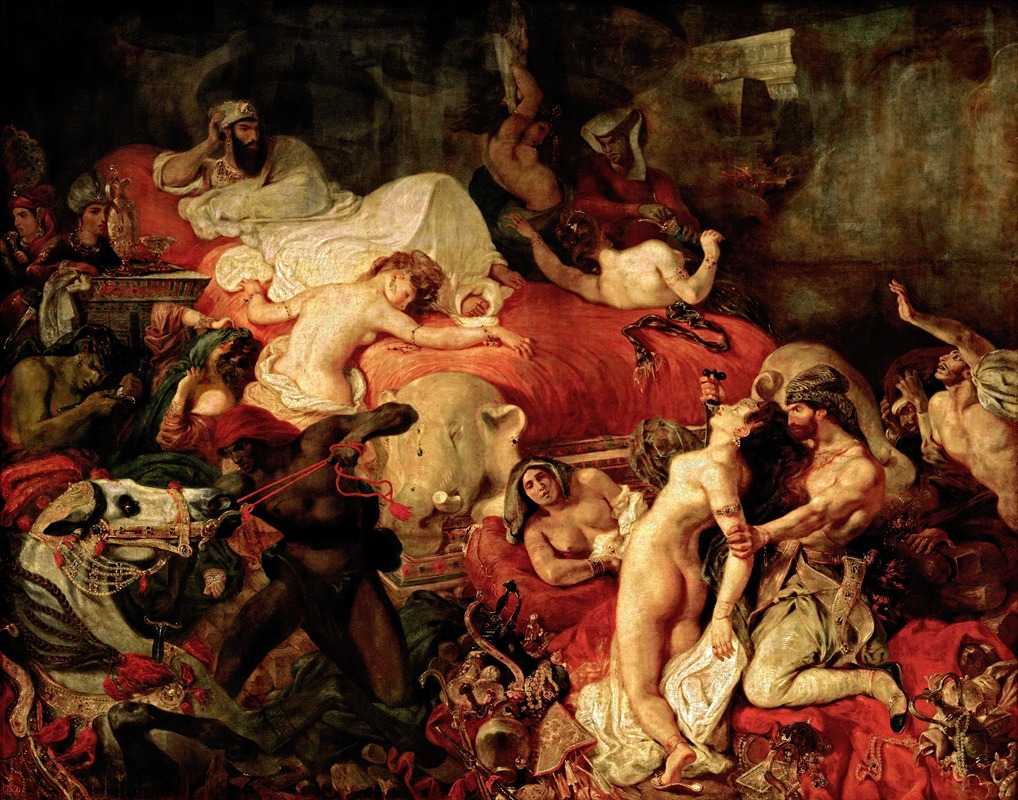
Death of Sardanapalus
A hand-painted replica of Eugène Delacroix’s masterpiece Death of Sardanapalus, meticulously crafted by professional artists to capture the true essence of the original. Each piece is created with museum-quality canvas and rare mineral pigments, carefully painted by experienced artists with delicate brushstrokes and rich, layered colors to perfectly recreate the texture of the original artwork. Unlike machine-printed reproductions, this hand-painted version brings the painting to life, infused with the artist’s emotions and skill in every stroke. Whether for personal collection or home decoration, it instantly elevates the artistic atmosphere of any space.
"The Death of Sardanapalus" is a renowned painting by the French Romantic artist Eugène Delacroix, completed in 1827. This large-scale work is considered one of Delacroix's masterpieces and is currently housed in the Louvre Museum in Paris, France. The painting is inspired by the legend of Sardanapalus, a semi-mythical Assyrian king whose story was popularized in the 19th century by Lord Byron's play "Sardanapalus."
Delacroix's painting depicts the dramatic and chaotic final moments of Sardanapalus, who, according to legend, chose to destroy all his possessions, including his concubines, horses, and treasures, rather than surrender to his enemies. The scene is set in the king's opulent chamber, where the tumultuous composition is filled with vibrant colors, dynamic figures, and a sense of impending doom. The painting's dramatic intensity and emotional depth are characteristic of the Romantic style, which emphasized individualism, emotion, and the sublime.
The central figure of Sardanapalus reclines on a sumptuous bed, observing the destruction with a detached and impassive demeanor. Around him, chaos ensues as his servants carry out his orders to kill his concubines and destroy his possessions. The composition is marked by swirling forms and a rich palette dominated by reds, golds, and deep shadows, creating a sense of movement and urgency. Delacroix's use of color and brushwork was innovative for its time and influenced later artists, including the Impressionists.
Delacroix was inspired by the themes of exoticism and the Orient, which were prevalent in European art and literature during the 19th century. The painting reflects the Romantic fascination with the East and the portrayal of Oriental subjects as mysterious and decadent. Delacroix's interest in these themes was further fueled by his travels to North Africa in the 1830s, which had a lasting impact on his artistic style.
"The Death of Sardanapalus" was met with mixed reviews when it was first exhibited at the Salon of 1827. Critics were divided over its unconventional composition and the perceived excess of emotion and color. However, the painting has since been recognized as a significant work in the history of art, exemplifying the Romantic movement's break from the neoclassical tradition and its embrace of emotion and imagination.
Delacroix's painting continues to be studied for its technical mastery and its exploration of themes such as power, destruction, and the human condition. It remains an important example of Romantic art and a testament to Delacroix's skill as a painter and his ability to convey complex narratives through visual means.

















